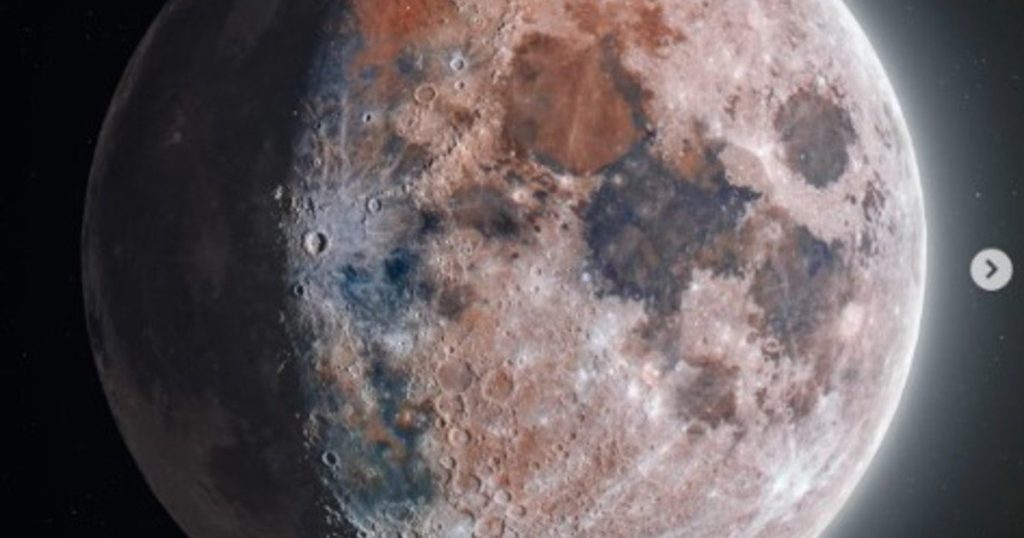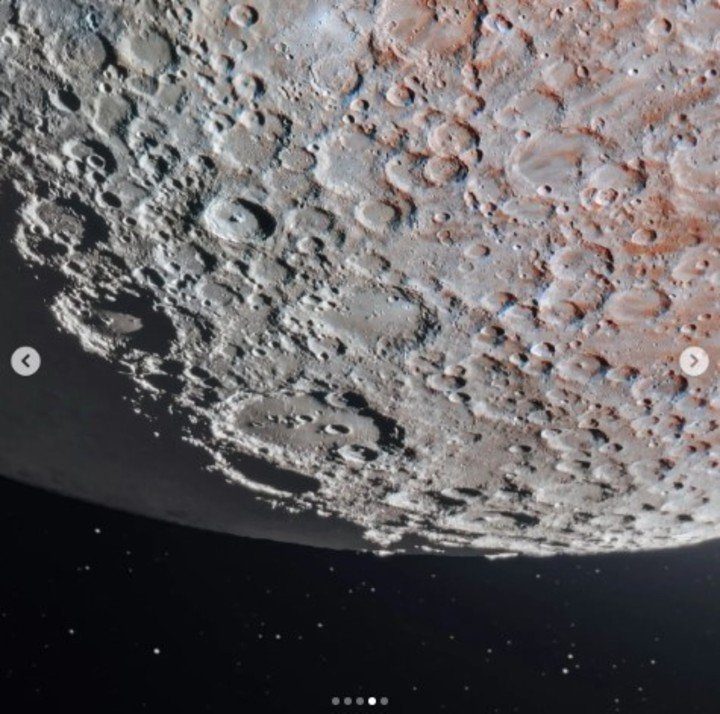A photographer and planetary scientist spent 9 months to put it together. The result was amazing.
astrophotographer Andrew McCarty And the world of planets Conor Mathern they took More than 200,000 images of the moon In one night, with the aim of capturing the smallest details of its surface and its colours.
The result was amazing, because in one image, obtained from all the captured images, they were able to capture it All shades of the moon range from gray, white, blue and brown.
The 174MP image captures the craters and texture of the moon in stunning detail. It was posted on social media by Americans Andrew McCarty and Connor Mathern as a “honour” ahead of NASA’s “Artemis” test mission on the moon.
Arizona-based Andrew McCarthy worked with planetary scientist and space photographer Connor Matherne to create the image as a “collaborative tribute” to NASA’s upcoming Artemis mission.
He continued, “This is the highest resolution shot of the Moon I’ve ever taken, color data captured while cosmic_background captures the details. Together, we ended up with an incredibly detailed image of our lunar neighbor in stunning color.” .
All pictures were taken in one night, and the couple spent nine months editing and assembling their work for the final product. The collection is assembled like a mosaic, and each mosaic consists of thousands of images,” McCarthy said.
He explained that while taking thousands of photos that reveal intricate details of the lunar surface, Matheren focused on the colors of the moon, according to El Espectador de México.
The two American astrophotographers were able to quickly go viral after capturing what they describe as a photo “ridiculously detailed” the moon.
Everything is ready for Artemis Mission 1
NASA’s Artemis mission It will take off from Cape Canaveral on August 29, and will be the first unmanned test of the Space Launch System’s ultra-heavy rocket, capable of taking humans to the moon.
Fifty years after the last Apollo mission, the Artemis program is set to take over lunar exploration with a test launch Monday of the most powerful rocket in NASA history.
The goal is to return humans to the Moon after the 1972 Apollo mission, and eventually to Mars.
The 98-meter Space Launch System (SLS) rocket is scheduled to lift off at 8:33 a.m. (1233 GMT) from the Kennedy Space Center (KSC) in Florida.
The mission, which has been planned for more than a decade, is unmanned but highly symbolic for NASA, under pressure from China and private competitors such as SpaceX.
Hotels around Cape Canaveral are filling up and between 100,000 and 200,000 spectators are expected to attend the launch event.
The massive orange and white rocket was stationed at KSC’s Launch Complex 39B for a week.
“Since it was rolled out to the platform last week, you can feel the excitement and energy,” says Janet Petrou, Director of KSC. “It’s really clear.”
The goal of the flight, christened Artemis 1, is to test the SLS system and the crew’s Orion capsule located at the front of the rocket.
Dolls equipped with sensors will take the places of the crew and record levels of acceleration, vibration and radiation. In addition, cameras will capture every moment of the 42-day flight and a “selfie” of the spacecraft will be taken with the moon and Earth in the background.

“Proud web fanatic. Subtly charming twitter geek. Reader. Internet trailblazer. Music buff.”

:quality(85)/cloudfront-us-east-1.images.arcpublishing.com/infobae/TEQF6EONZRFGLLLDIDD4L2O4EE.jpg)

:quality(75)/cloudfront-us-east-1.images.arcpublishing.com/elcomercio/XU32LRAEZFDDPNVHLFU3CKVBYY.jpg)







More Stories
How to create 3D videos with my iPhone, it will be very useful even for your business
NASA discovers an anomaly in the Earth’s magnetic field that could have serious consequences for humans
Can the Earth be divided into two parts?